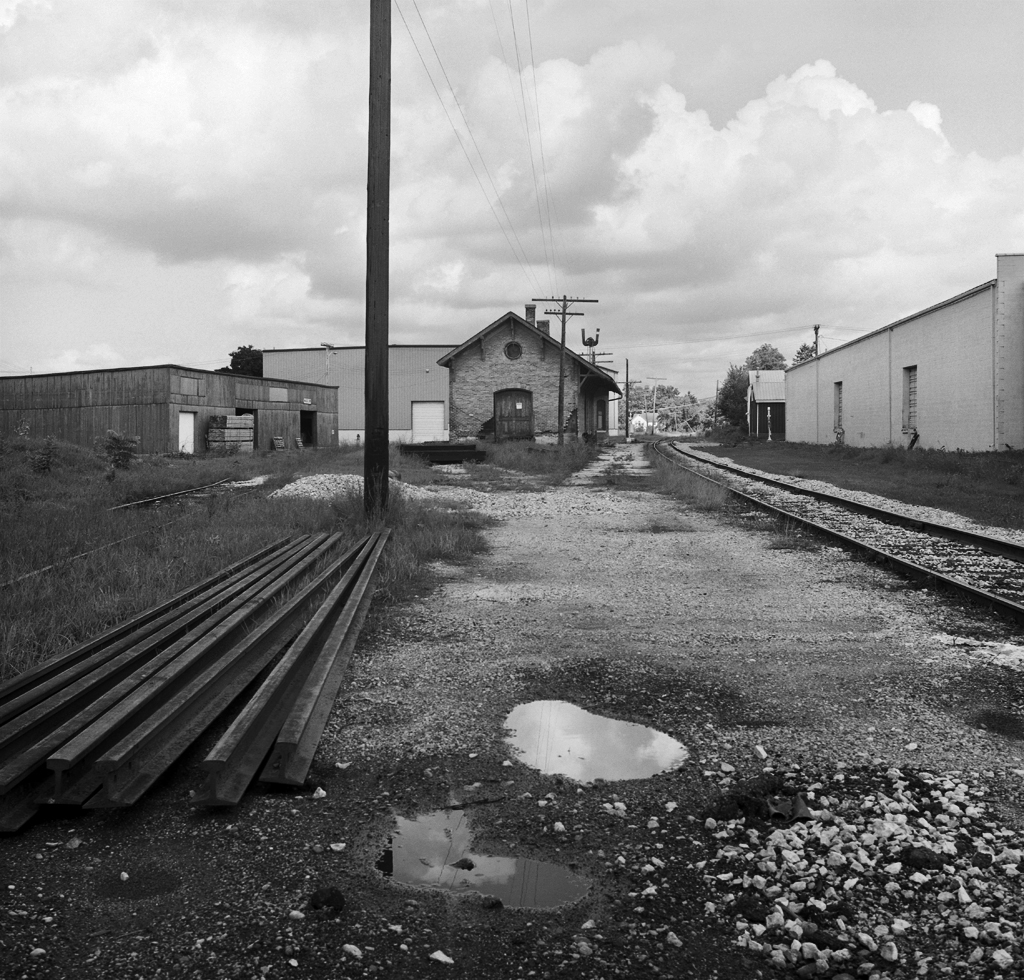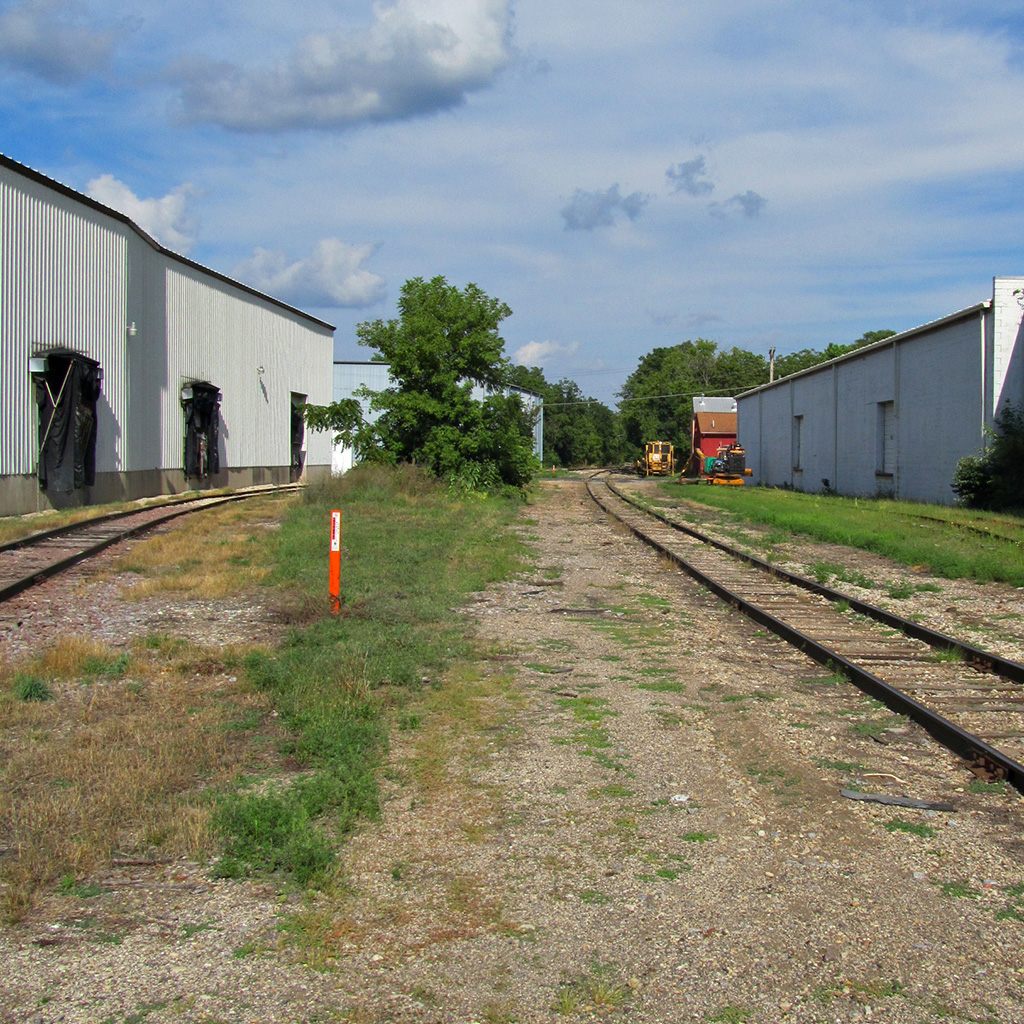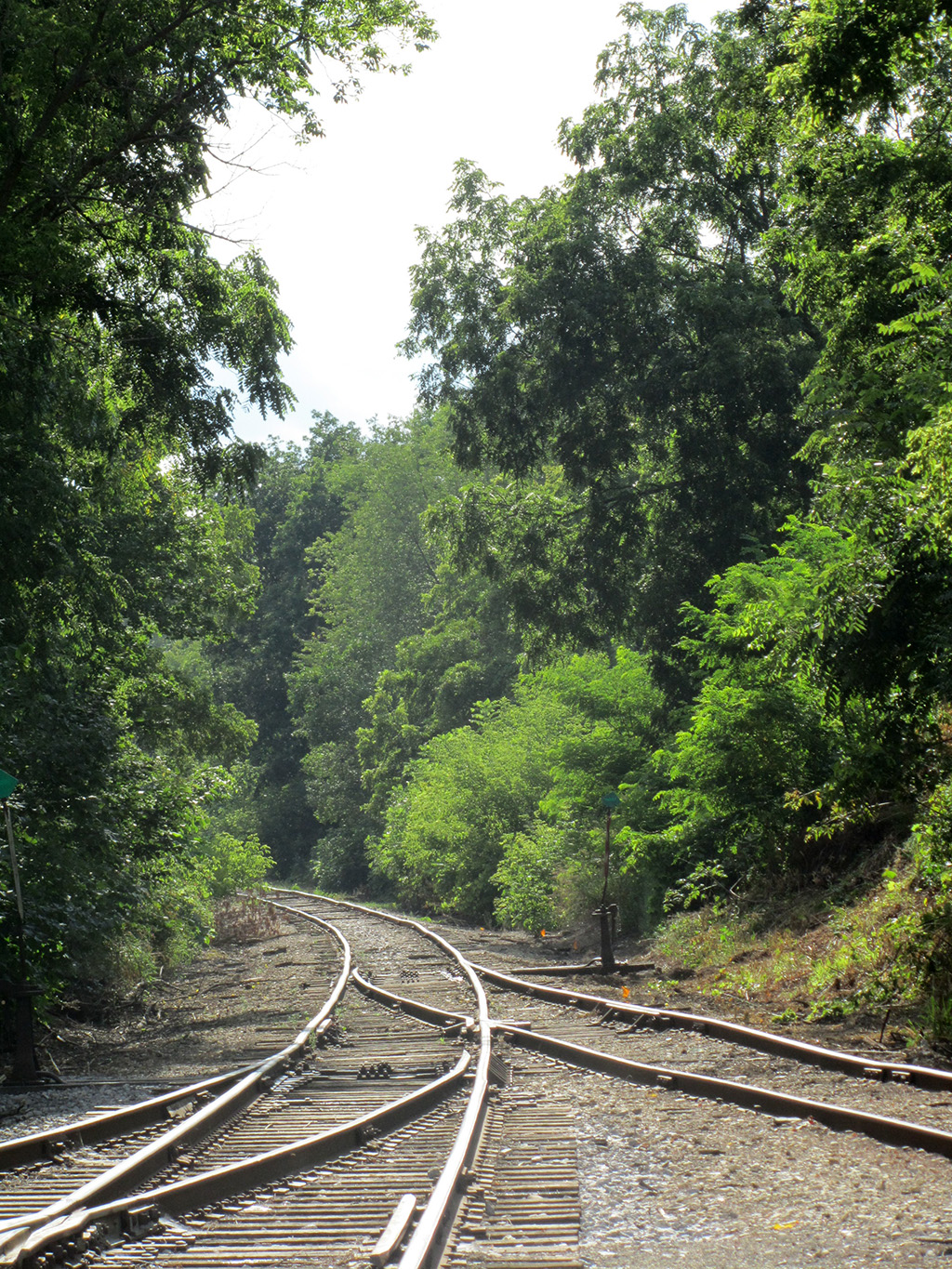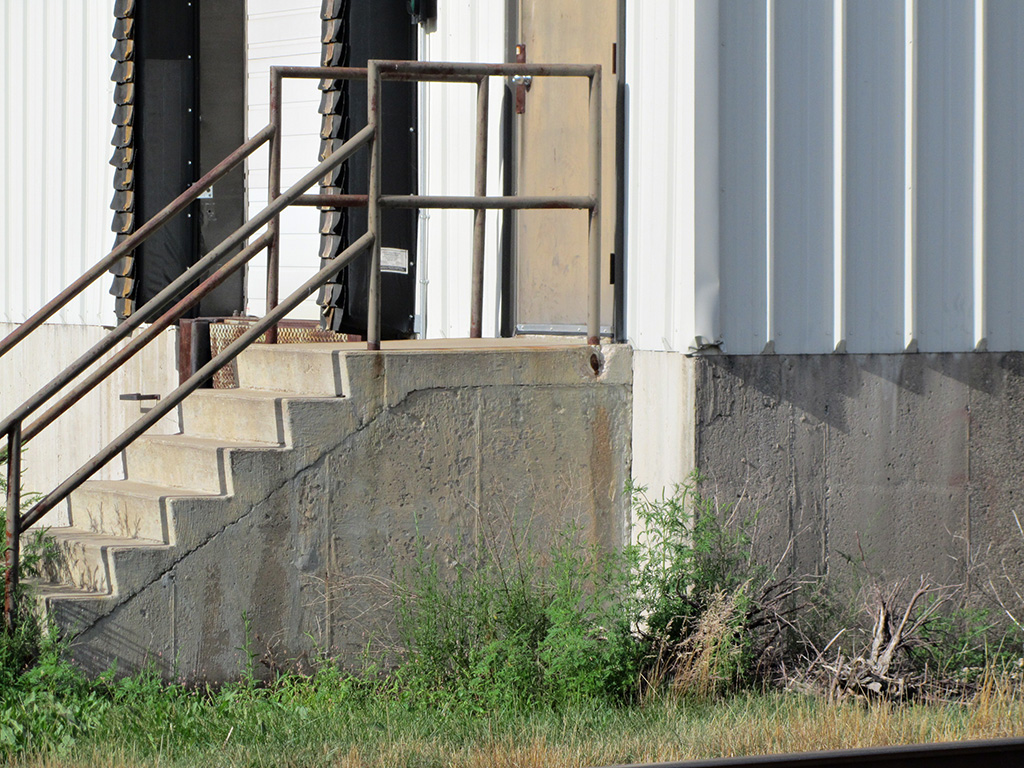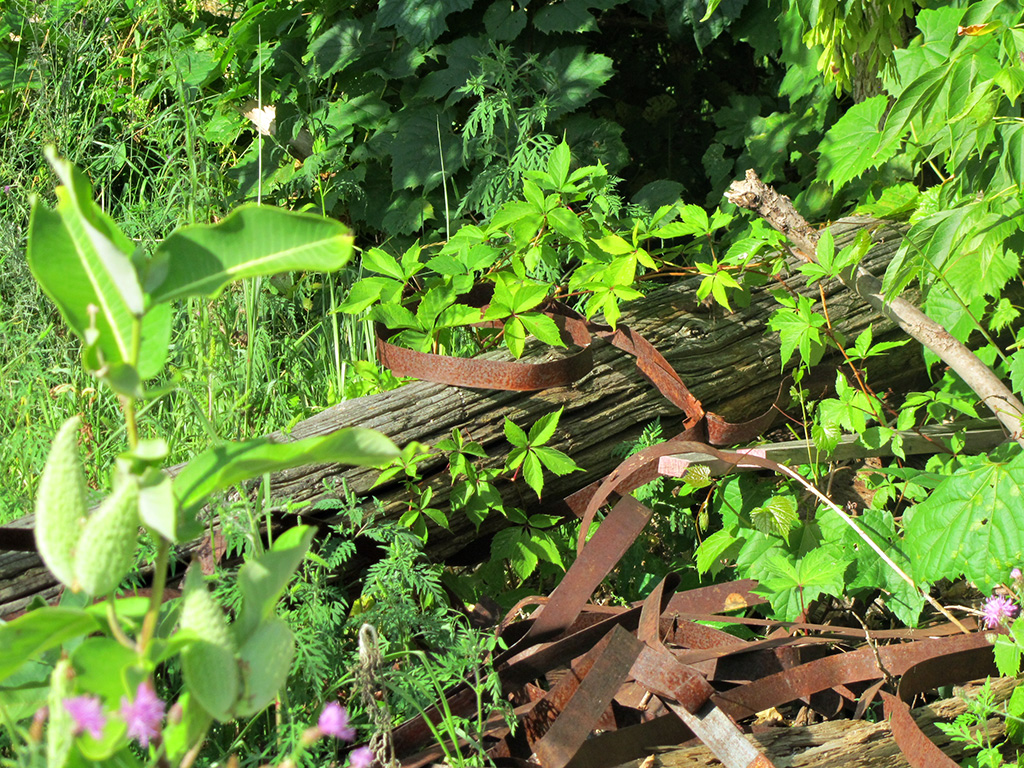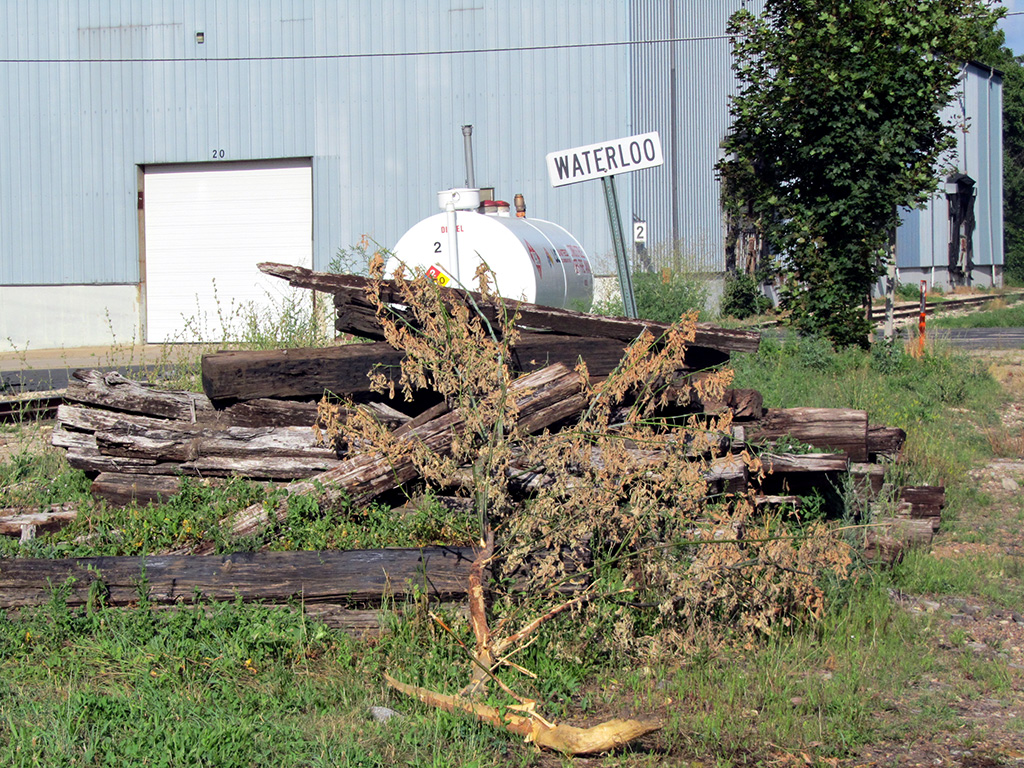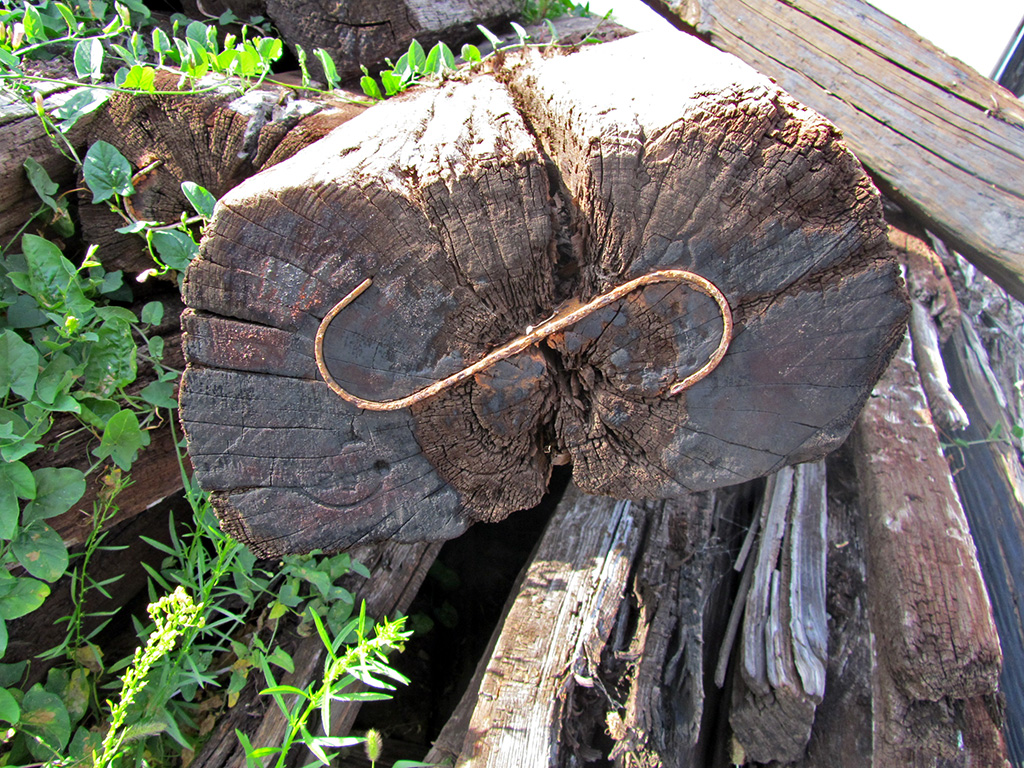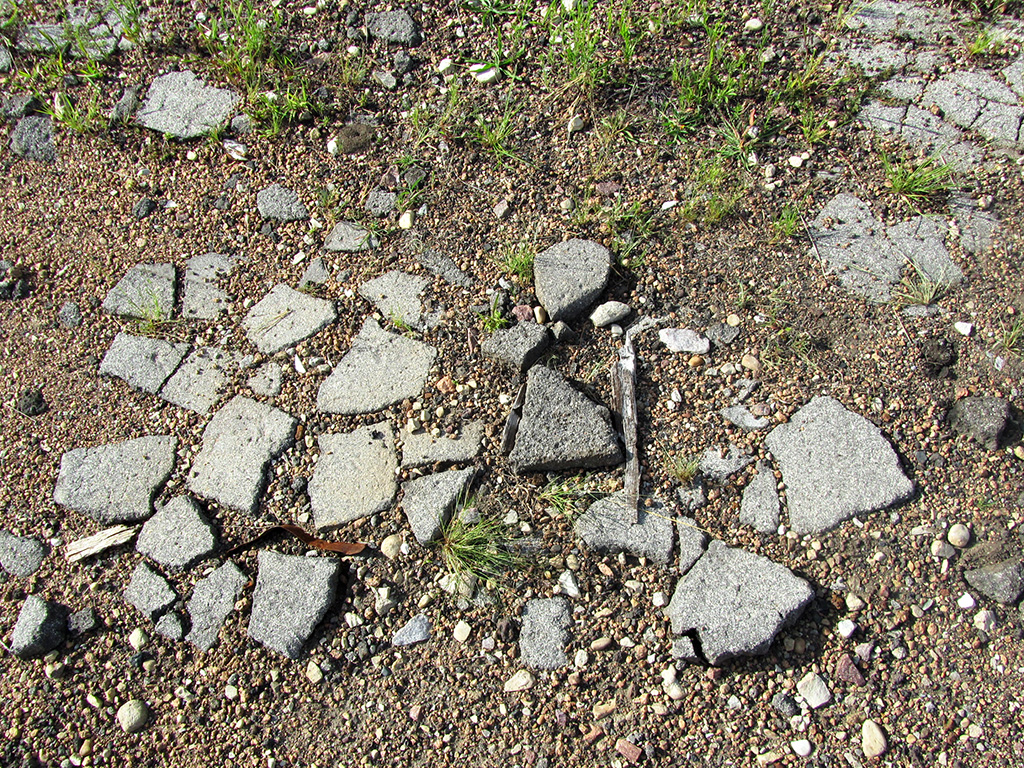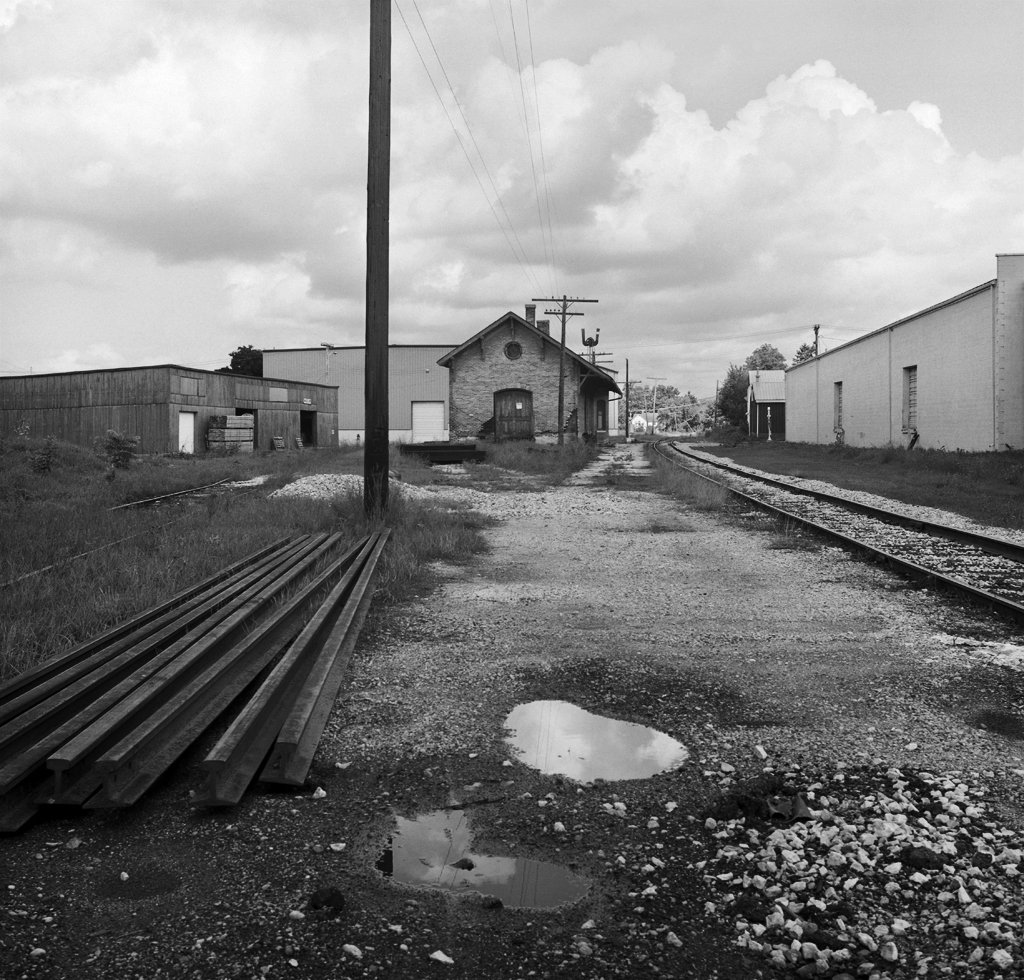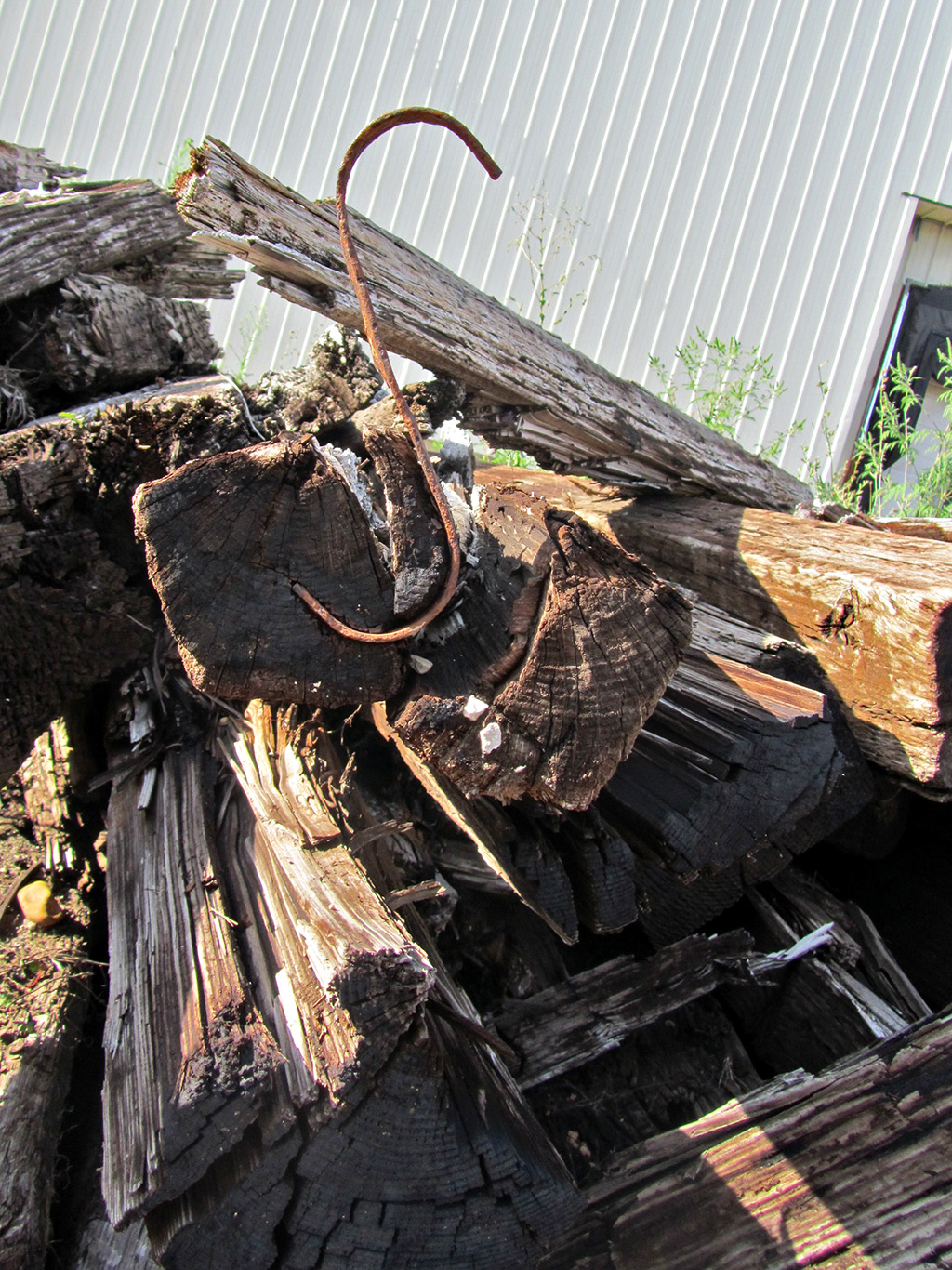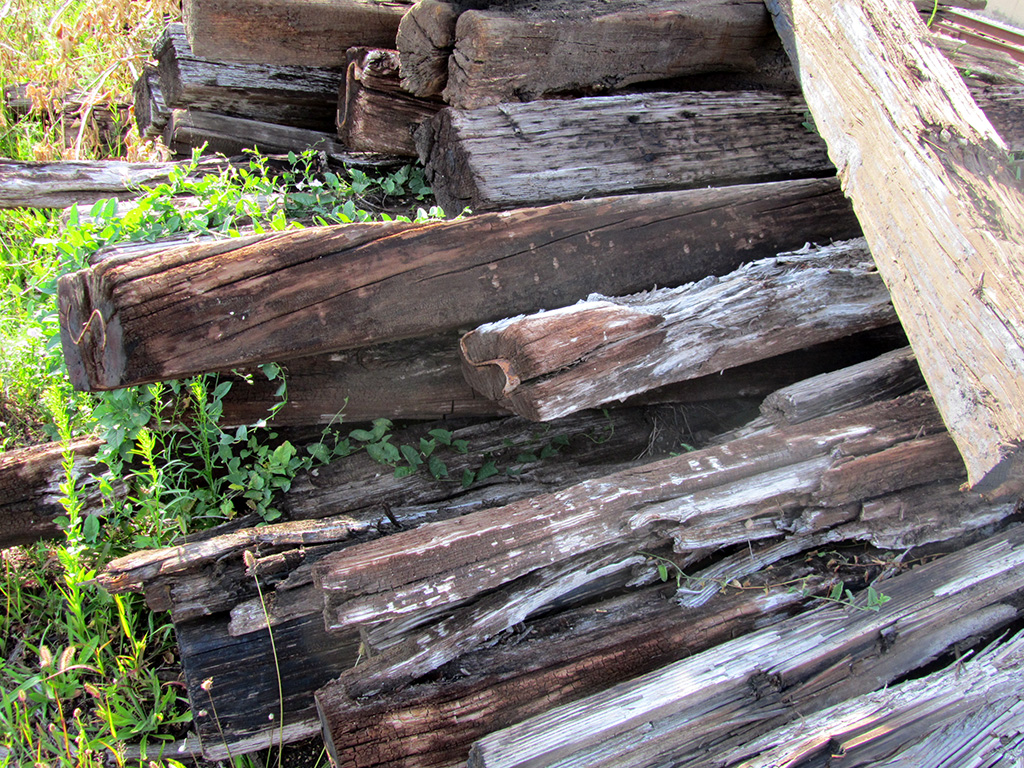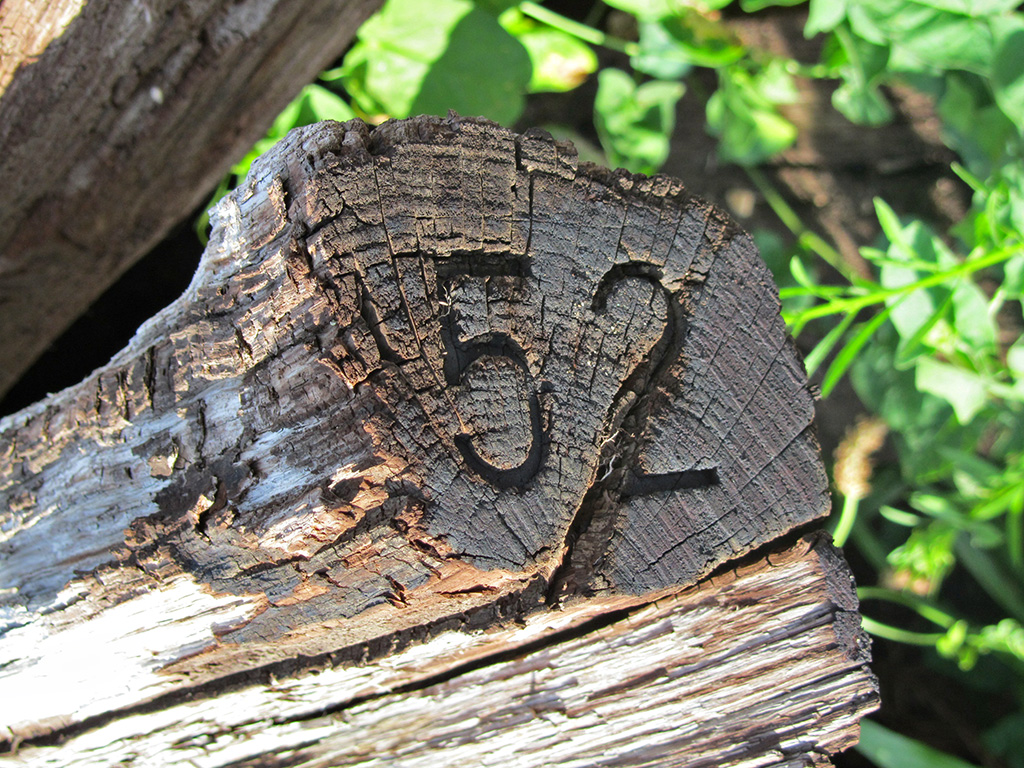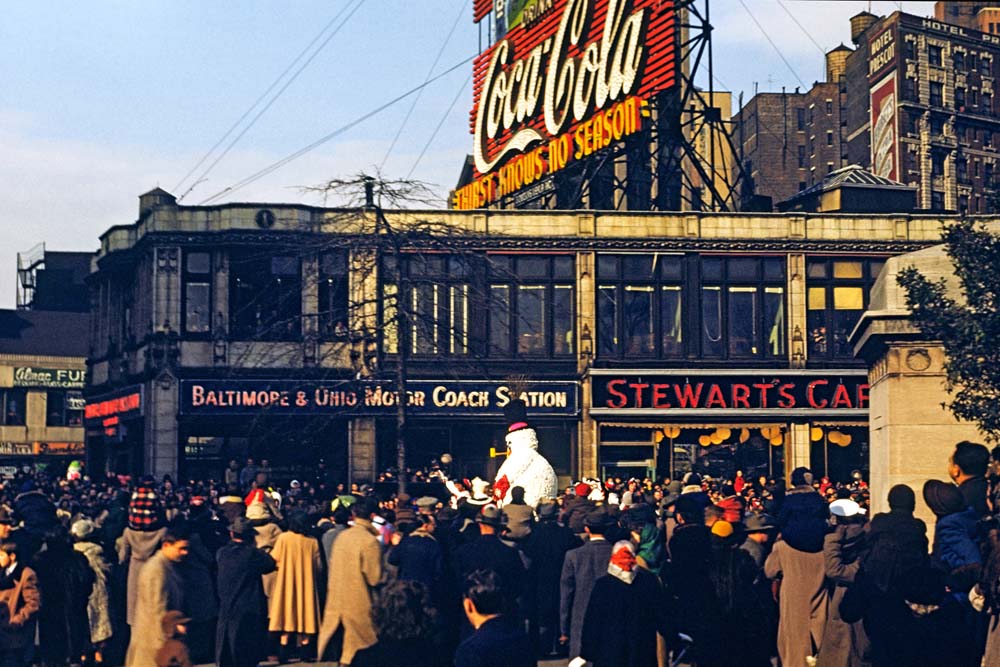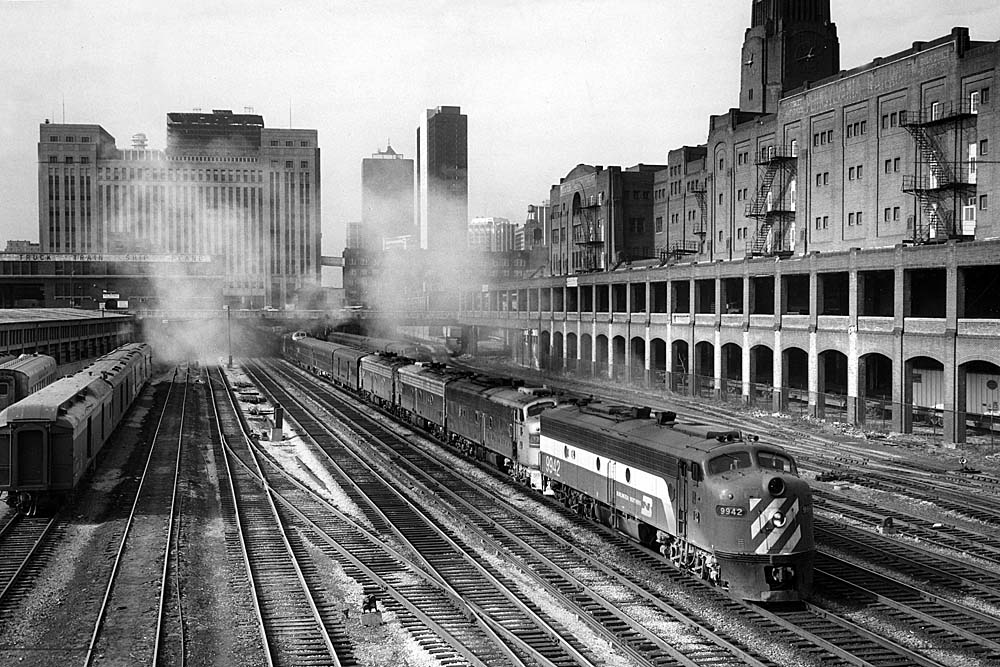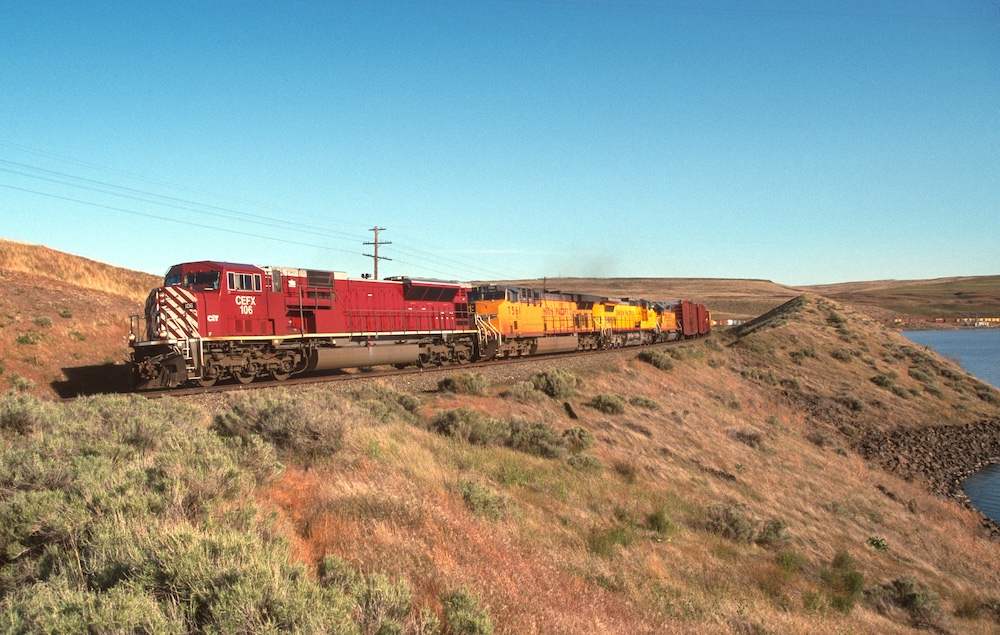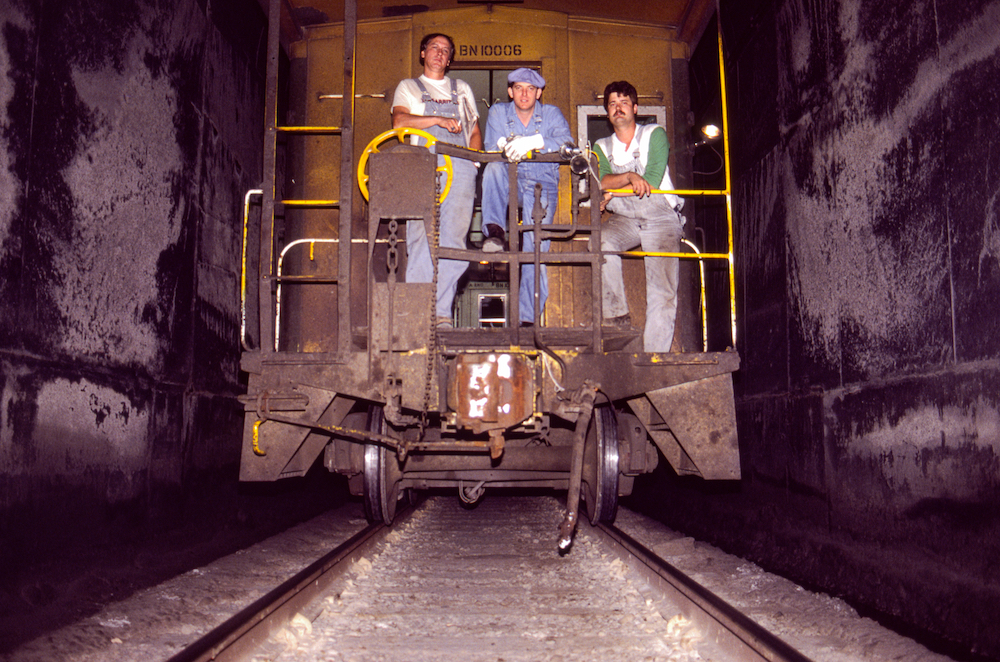They have become immortal.
Consider Joe Rosenthal’s view of the flag raising on Iwo Jima near the end of World War II, or, within railroad photography, A.J. Russell’s famous photograph of the completion of the first transcontinental railroad at Promontory Summit, Utah, in 1869.
Those two images capture momentous events, but what about views of everyday life and “unremarkable” places? Photographer David Plowden has made a career of creating powerful images of seemingly quotidian features of the American landscape, often working, as he is fond of saying, “one step ahead of the wrecking ball.” Much of his work portrays aspects of an America that has already vanished. Many of his photographs have become visual icons, and they frequently portray the railroad and its lasting imprints. Recently, one such view took a step towards immortality when it struck a chord with the Center for Railroad Photography & Art’s intern, Aviva Gellman.
Plowden’s photograph shows the Milwaukee Road right-of-way and depot in Waterloo, Wisconsin, in 1980. The wrecking ball arrived four years later, as the depot was demolished in 1984. The tracks remain in service, now part of regional railroad Wisconsin & Southern. Had recent plans for high-speed passenger rail come to fruition, this line would now host regular passenger trains between Madison and Milwaukee — which would have brought even more changes to the scene. Even so, the view has changed significantly in the past thirty-three years, as Gellman discovered when she visited Waterloo with her grandparents earlier this month. She began by re-photographing Plowden’s view from 1980, but she went on to deeply explore the area, becoming an industrial archeologist for the afternoon. Static objects may never achieve true immortality, but for one image to inspire so much testifies to the enduring nature of photographs such as Plowden’s.
To learn more about this long arc of creativity, I posed several questions to Gellman about Plowden’s work and her project (which she pursued entirely on her own and beyond her regular work for the Center). My questions, and her responses, appear below.
AG: When I first started at the Center and you gave me Requiem for Steam to read, I was so captivated by the introduction, and how Mr. Plowden wrote about steam locomotives like they were people to him. And then I was so moved by his photography that I wanted to go and see these places and appreciate his passion. So when I saw one from Wisconsin, I had to go there.
AG: I really liked the depot. There’s something so intriguing to me about older buildings. I don’t really have any strong feelings about modern architecture, but when I see older buildings, I always think about what happened inside. If I walked in there, who else has stood on the floor, who else has opened the door, what kind of people have come through here?
AG: Well, at first I didn’t know that Milwaukee Road was a railroad, and not actually a road. When I drove through the first time, I stopped and looked up Milwaukee Road on my phone, and there actually is a road named Milwaukee, but if I had just followed that, I never would have found it. So that was issue number one.
The next thing to do was to look at the aerial photographs, which were really helpful. I could see that there were two sidings, which was a really easy identifying feature. The final things that really helped were the buildings that are at the same height and in the same place, which I was able to match right away. That was mostly the right side of the picture. The warehouse, the railroad crossing sign, and then there’s a red shed behind that—those three things are still in the same places. Once I lined up my camera with the right half of this picture, I knew I had to have the left half as well.
AG: There’s a fiber optic cable that runs right about where the telephone pole was in the original picture, and there are several orange markers that denote this. That struck me as odd, because I understand now that this was one of the first railroads in the state. I think it’s strange that now there’s a fiber optic cable—which is such new technology—running underneath the location of a fairly old structure.
AG: I wanted to find where the telephone pole had been, so the first thing I did was locate that based on the original picture. I was walking towards the area and all of the sudden I found what I presumed to be the pole. The other thing that I found was the remains of a platform. It had clearly been poured because it had even edges, but it was all cracked and there were little bits of rubble. It made me wonder who had come there and what had happened.
I loved all of the little differences in the crossties, like the s-shaped wire pieces in the ends and the number 52 that was carved into one. I kept thinking about the history shows that I watched as a kid, where they take an old, fuzzy, black-and-white photograph and draw circles to say, “Here’s what you’re looking at,” and you had no idea what you were looking at until they blatantly outlined it for you. I kept seeing these little things, and I knew that if I showed someone else the photograph, they wouldn’t know what they were looking at, but I knew what I was looking at, and I could go back and make my own circles. And there’s something about that that I just found incredibly satisfying.
Scott Lothes is a frequent Trains contributor and serves as president and executive director for the Center for Railroad Photography & Art in Madison, Wisconsin.
Aviva Gellman is a junior at the University of Minnesota, majoring in political science and theater. She joined the Center as an intern in May.





